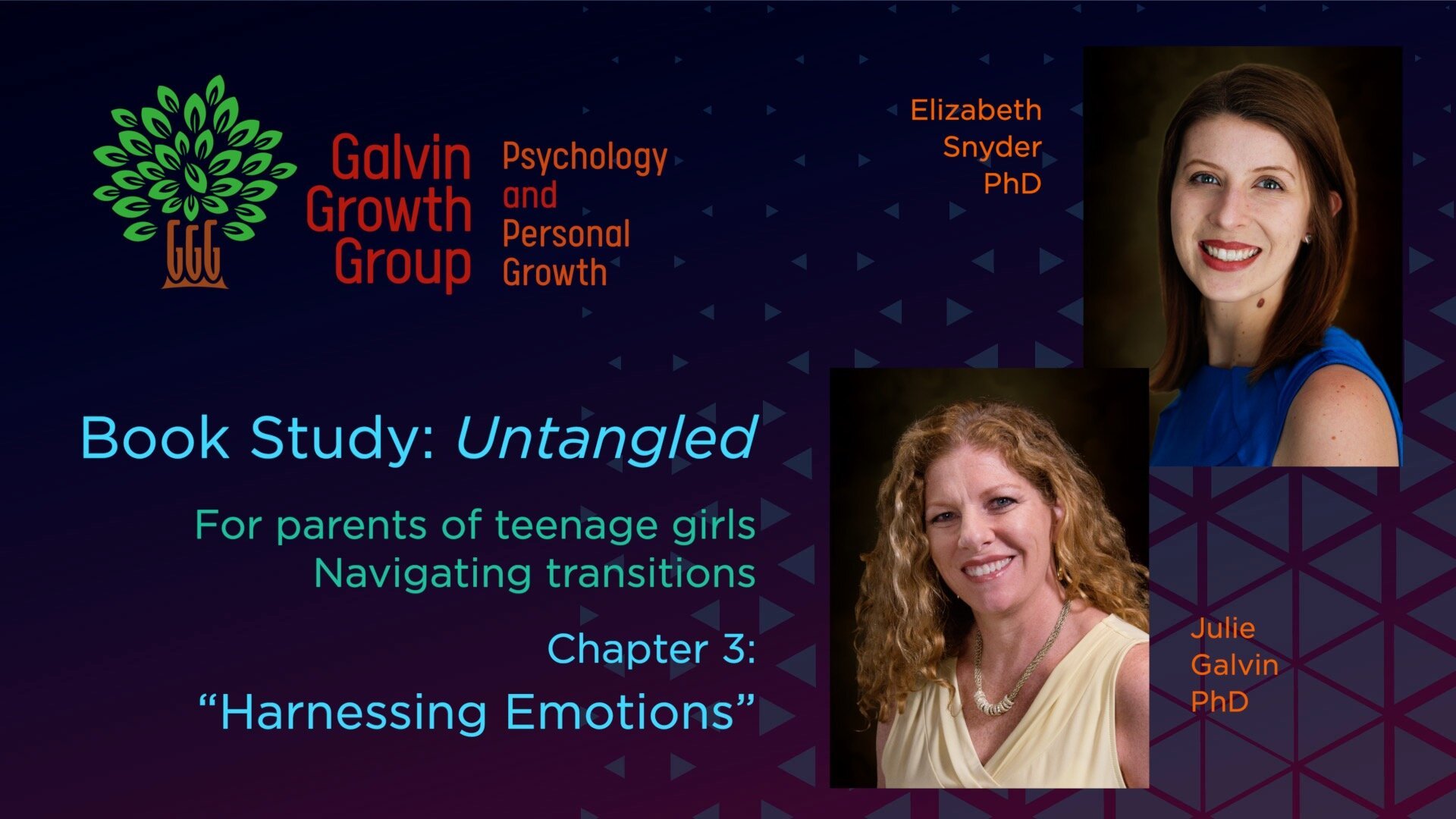
14 Jul Parenting Teenage Girls Video Series — Week 4
Untangled: Chapter 3 — Harnessing Emotions
Last week, Dr. Galvin and Dr. Snyder addressed “Joining a New Tribe,” Chapter 2 in Dr. Lisa Damour’s book, Untangled. They discussed how young girls tend to join groups of friends and create relationships within those “tribes,” which might be stronger than their relationships with their families. This week, Dr. Galvin and Dr. Snyder focus on “Harnessing Emotions” and what adults can do to help understand them. Young girls might be described as a little more explosive or sensitive than they used to be.
What exactly happens to a girl’s emotions during puberty?
-
From ages 6–11, children are in the Latency Developmental Stage, which means that they are typically mild mannered.
-
Once teens face adolescence, their brain develops and grows within the Limbic System.
-
The amygdala part of the brain reacts more strongly to emotional output.
-
The Limbic System might overpower the Frontal Cortex, which may cause a mood change!
-
The brain isn’t fully developed until the mid 20s.
Some more topics from Chapter 3 discussed by Dr. Galvin and Dr. Snyder:
-
You: The Emotional Dumping Ground
-
You should help her understand complaining versus venting.
-
Sometimes she just wants to feel heard instead of having an answer to her problem.
-
-
I’m Upset, Now You’re Upset
-
Your daughter might want to get rid of an uncomfortable feeling and want you to take ownership of the feeling.
-
Buy the Book
In the coming weeks’ videos, Dr. Galvin and Dr. Snyder will explore other transitions into adulthood:
-
“Contending with Adult Authority”
-
“Planning for the Future”
-
“Entering the Romantic World”
-
“Caring for Herself”
If any of these issues persist or worsen, consider having your child talk with a therapist. Contact us at (734) 323-4897 or info@galvingrowthgroup.com for more information.
By: Grace O’Neill

